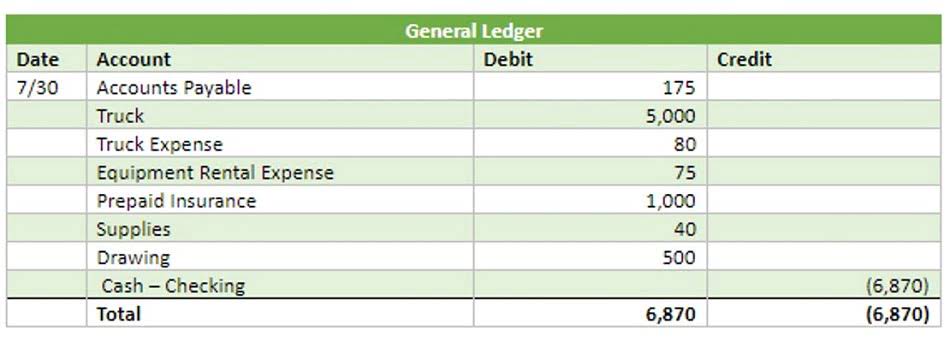
Organizations must also determine whether donations are restricted or unrestricted. For example, a non-profit receiving a donated building for educational purposes must document this restriction in its financial statements. “Smith & Howard” is the brand name under which Smith & Howard PC and Smith & Howard Advisory LLC provide professional services. Smith & Howard PC and Smith & Howard Advisory LLC, practice as an alternative practice structure in accordance with the AICPA Code of Professional Conduct and applicable law, regulations and professional standards.

In-Kind Donation Utilization
The obligations can take various forms, such as activities consistent with the recipients’ normal operations, donor-imposed restrictions, and donor-imposed conditions. These obligations are subject to different accounting rules and therefore must be properly identified. Contributions funding activities consistent with the recipients’ normal operations are generally classified as contributions without donor restrictions.
- Instead, the shareholder increases its investment in a subsidiary and a subsidiary shows the receipt of a free asset directly in equity as a capital contribution from a shareholder.
- You can use the price of the same asset or a similar asset if prices are available, or consult a professional appraiser.
- Donations are typically seen in nonprofit organizations as they rely on such contributions to fund their missions.
- We offer an extensive library of learning materials, including interactive flashcards, comprehensive textbook solutions, and detailed explanations.
- By comparison, donors who make restricted contributions impose rules on the for how the gift can be used, including how the money is spent or when it is used.
Business-Type Activities (FT and Component Units (FT
Donated capital can result in the form of asset transfer or services rendered to an organization. Contributed tangible property worth accepting generally possesses the common characteristic of all assets—future economic benefit or service potential. The future economic benefit or service potential of a tangible item usually can be obtained by exchanging it for cash or by using it to produce goods or services. In-kind services are common in the nonprofit industry, as is failure to report them. Fair gaap accounting for donated assets market value is the price you’d pay on the open market if you had to purchase the item or service instead of having it donated. Hopefully you already know a bit about what in-kind donations are and how they help grow your mission.
GAAP Update: What To Do When Your Arts and Culture Nonprofit Sells a Collectible

To establish the fair market value of non-cash contributions, a nonprofit must assess what the donated item or service would sell for in the open market. The condition, utility, and presence of a willing buyer and seller are factors which must be considered. Common resources for determining this value include online marketplaces, thrift stores, and commercial inventory lists.
Reporting and Disclosure Requirements
- Stakeholders and other readers of the financial statements might dispute that recording these items will merely gross-up revenue and expenses with no effect on the operating results.
- However, they must issue written confirmations for donations exceeding $250 and comply with IRS regulations.
- Valuing donated services mainly hinges on whether the service provided requires a specialized skill.
- GASB 33, paragraph 7d, defines a donation as a voluntary non-exchange transaction entered into willingly by two or more parties.
- For example – when you receive pens, lighters or other promotional materials, they might not make any difference in your books, so just don’t worry about their accounting.
Many nonprofit organizations already have the raw data needed for the change, particularly if they use professional donor management software. The nonprofit must track down the core data, create a workflow to include it on real estate cash flow financials, and properly format the information in financials. Historically, nonprofits were not required to give detailed information on the value and use of in-kind donations in financial reports.
- This article explores how are donations recorded on a balance sheet, breaking down the different types of donations, their implications, and the accounting standards that govern them.
- For example, the donor might want all of the funds to be used further the nonprofit’s core mission, such as buying food to feed the homeless, but not on administrative expenses.
- By maintaining clear records and adhering to GAAP or IFRS guidelines, organizations can provide a true picture of their financial health and uphold their accountability to donors and stakeholders.
- Properly accounting for in-kind gifts increases your revenues and expenses by the same amount.
- Valuation techniques, such as market, cost, or income approaches, are used depending on the asset’s nature.
For more information on state requirements, see our online Nonprofit Audit Guide. In addition, funding sources, such as private foundations or government agency grants and contracts, may require an audit. The changes in this ASU also can be useful for other nonprofits in helping to clarify their financial position, even if an audit isn’t required.
Measurement at Fair Value

For instance, a pledge for a future donation is recognized when it becomes enforceable under the accrual basis of accounting. This approach ensures that revenues and expenses are recorded in the appropriate periods. Credit the donated capital account by the amount of the asset’s fair value in the same journal entry only if you received the asset gross vs net from a government entity, such as a city. Or, credit the account called “gain on receipt of donated asset” by the same amount only if you received the asset from a non-governmental entity, such as another company. In this example, assume you received the piece of equipment from another company.
Measuring Fair Value
Additional disclosures are required about the intended use of the donated items and services (generally they are used in the organizations operations and programs). You also will need to disclose if there are any donor-imposed restrictions on the donated items. An example of this would be if a donor gave a piece of artwork and stipulates it can’t be sold but could be donated to another nonprofit.
ASU 2019-03: Updating How the Proceeds of A Collectible Can Be Used

She gained her PhD in English Literature from Durham University in 2022, taught in Durham University’s English Studies Department, and has contributed to a number of publications. Lily specialises in English Literature, English Language, History, and Philosophy. Donated assets are non-monetary, they have a value, and they are useful to the organisation in achieving their goals and objectives. 1095Hawk is the most effective way to prepare and file your organization’s ACA 1095 forms.


